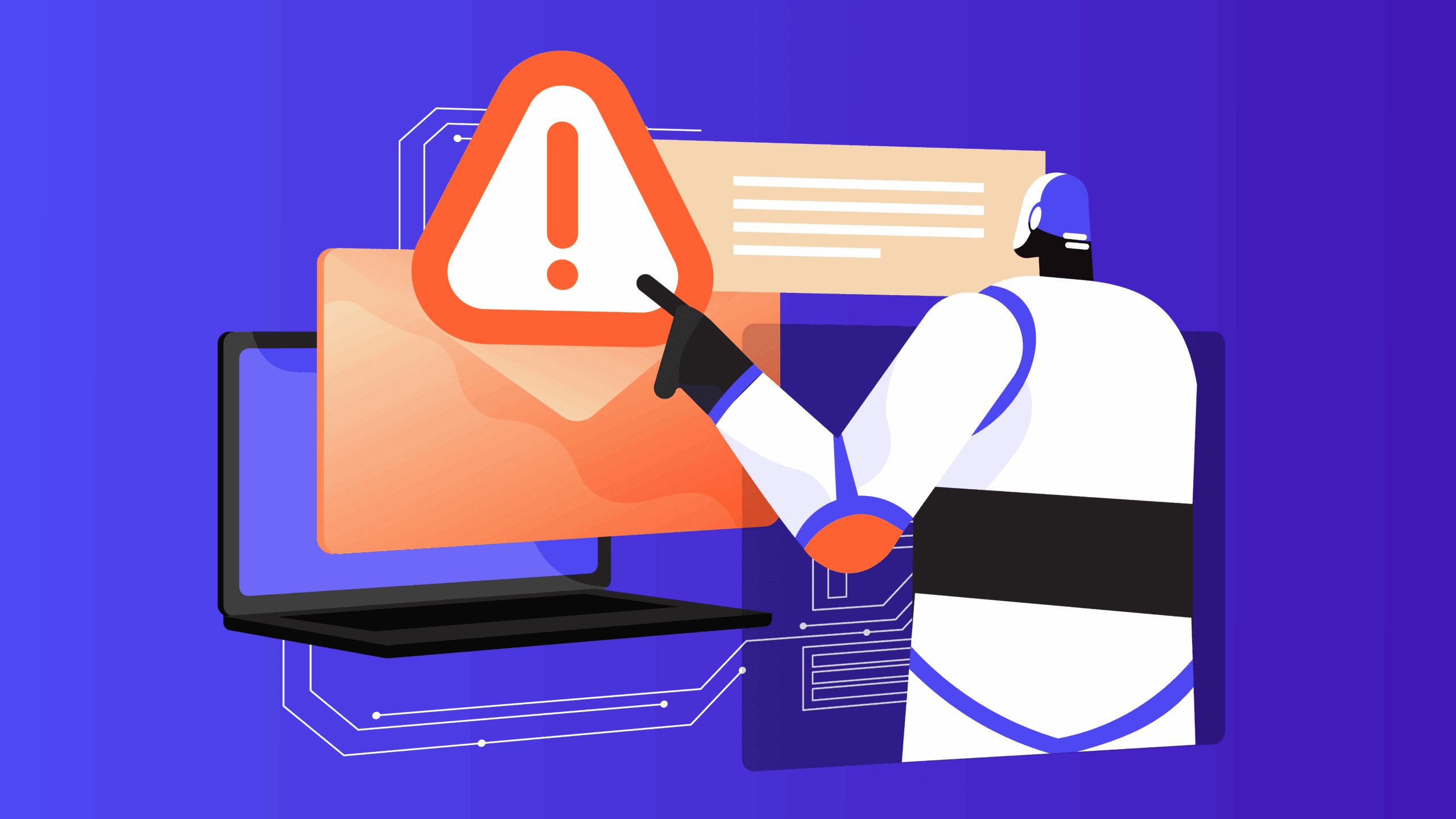Large language models (LLMs) are already deep inside enterprise workflows, yet most organizations are still not prepared to secure them.
A recent study found that nearly 40% of firms lack the basic data security controls like encryption and tokenization that are needed to safeguard AI adoption. A separate analysis showed that nearly 84% of enterprise data shared with AI tools is going into platforms classified as critical or high risk – meaning sensitive information is leaving the enterprise and landing in applications with limited safeguards or oversight. What’s more, 62% of organizations deploying AI have already incorporated an AI package containing at least one known vulnerability.
This paints a worrisome picture. Clearly, existing security frameworks are not designed for this environment. Controls built for static networks and perimeter defense cannot detect prompt injection, model drift, or information leakage through chained APIs. They can’t provide the visibility and behavioral monitoring that LLM pipelines demand.
Addressing these gaps starts with focus. Security leaders need to control access, separate workloads, and maintain continuous oversight. Without those fundamentals, LLM deployments are far more likely to expose sensitive data, trigger compliance failures, and disrupt operations. In this blog, we explore how secure-by-design deployment and hardened infrastructure provide the foundation enterprises need to adopt LLMs at scale with confidence.
Secure-by-Design LLM Deployment
Meeting the security demands of LLMs requires more than quick fixes. Security needs to be part of the design from the start. Enterprise AI deployments need enterprise-grade deployment models – which are designed from the ground up to reduce exposure, anticipate risks, and support compliance. To achieve this, enterprises need to focus on two areas: secure architecture and guardrails, and scalable resilience in operations.
-
Secure architecture and guardrails
The first step is knowing where models will be (or are) running – in the cloud, on-prem, or in hybrid ecosystems – and what risks come with each. From there, make sure the infrastructure basics are done right: network segmentation, access controls, and encryption for data in motion or at rest. LLMs also need their own set of defenses – prompt filtering to block malicious queries, input validation to catch unsafe requests, and rate limiting to keep attackers from overloading systems with too many requests at once.
Enterprises also need to put guardrails in place, defining how models can be built and deployed. Infrastructure as Code templates and secured CI/CD pipelines prevent mistakes from slipping into production. Logging should capture inputs, outputs, and system changes, while Zero Trust access makes sure every user and process is verified. Runtime monitoring adds visibility once systems are live. And to prove that these safeguards actually work, adversarial Red Teaming is essential. Testing defenses against prompt injection, model inversion, and other attacks – benchmarked against the OWASP LLM Top 10 – shows where gaps remain and where controls need to be strengthened.
-
Scalable resilience in operations
The second step is building resilience into daily operations. Enterprises need systems that can withstand pressure as LLM adoption grows. That starts with reducing the attack surface before deployment by finding and fixing weak points early. Endpoints and APIs should be tightly configured and isolated, and workloads need to be separated so that issues in one tenant do not impact others. This keeps incidents contained and prevents them from spreading across environments.
Operational maturity also requires security to scale reliably. Cloud-native and container best practices will ensure that every deployment uses the same hardened settings, so new workloads don’t introduce gaps. Security teams need continuous monitoring so they can see how models and data behave in real time. Logs must be detailed enough to show C-levels and regulators that controls are working.
Business Benefits of Hardened LLM Deployment
Enterprises that invest in hardening their LLM environments enjoy clear operational and business advantages, notably:
-
Reduced operational and compliance risk at scale
Building controls directly into systems and processes stops problems before models go live. Tight access rules, secure data flows, and strong governance practices reduce the chances of breaches and fines. Rolling out these protections across all deployments keeps risk manageable as AI use grows.
-
Hardened infrastructure and runtime protections
Resilient workloads and strong runtime safeguards protect against privilege escalation, model abuse, and cross-tenant exposure. Defenses like prompt filtering, input validation, and rate limiting contain manipulation attempts. These measures keep services running and protect sensitive data during live operations.
-
Visibility into model interactions and usage behavior
Comprehensive logging and monitoring provide insight into how models behave and how data moves through systems. This visibility helps teams detect anomalies, refine controls, and build reliable audit trails. And this offers executives the oversight they need to align AI programs with business priorities.
-
Secure deployment architecture for any LLM hosting model
Enterprises should apply consistent frameworks across cloud, on-prem, and hybrid setups. This keeps deployment options open while maintaining uniform security that scales reliably.
The Bottom Line
As enterprises adopt LLMs at scale, securing them requires a new playbook. Traditional security tools can’t stop AI-specific threats like prompt injection, model inversion, or API data leaks. Companies need to build security right into their LLM deployments from day one and make sure it works as AI use grows.
Hardened deployments solve this problem. They bring together secure infrastructure, real-time protection, and continuous monitoring so LLMs can run safely at enterprise scale. When you build security into the foundation, you reduce operational risk, avoid regulatory trouble, protect sensitive data, and give your security team clear visibility into what’s happening. You also get the audit trails that prove to executives and regulators that your controls actually work.
Get this right, and AI stops being something that keeps you up at night. It becomes something you can scale with confidence.
Ready to harden your LLM deployments and set the stage for AI resilience? Request an AI-Readiness Security Assessment from TeKnowledge today.





